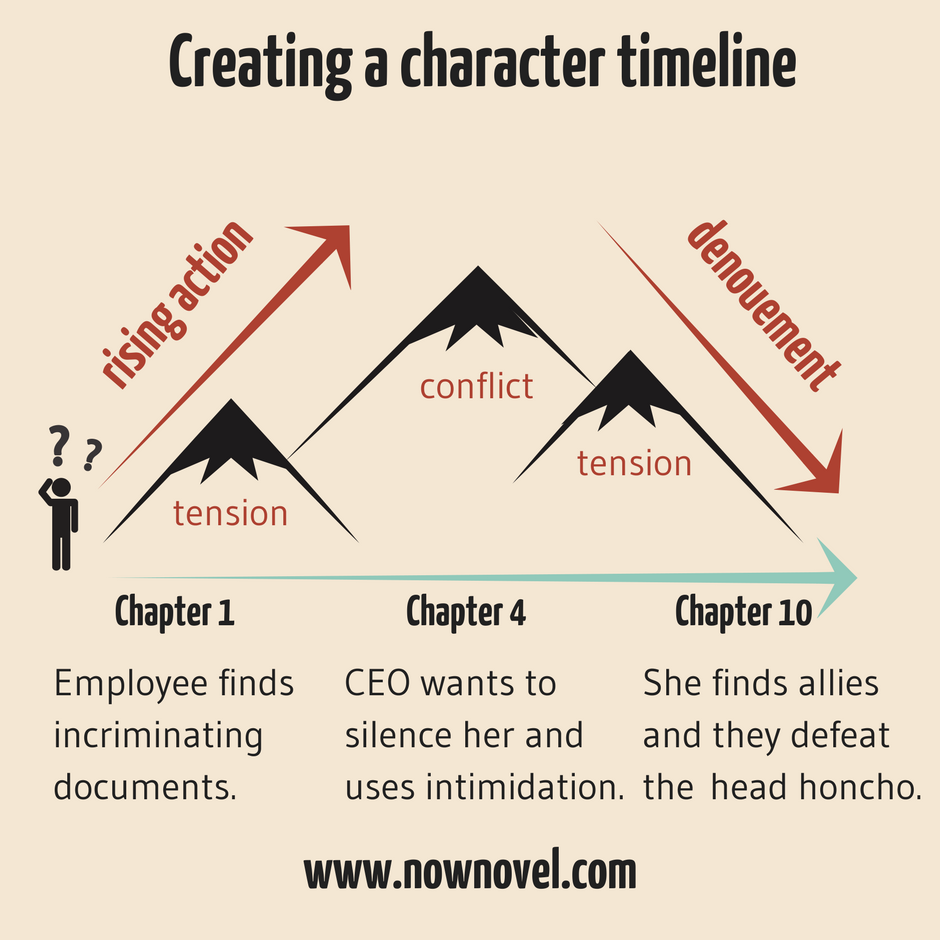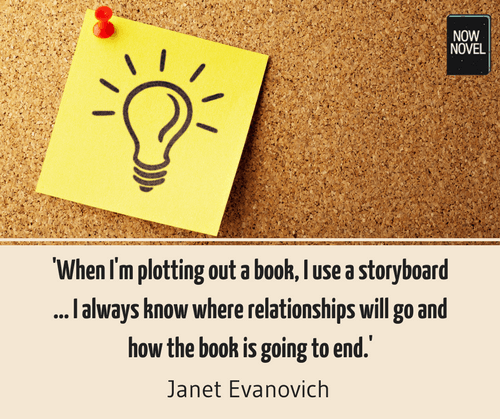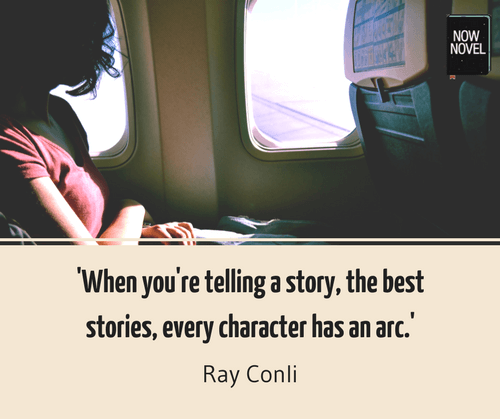Are you a plotter or pantser? Pantsers write without planning while plotters prepare beforehand with extensive outlines. Both types of writing have their uses. Yet not having a plan sometimes creates problems. Here are common pantser writing challenges we’ve found coaching authors (and ways to get past them):
Most common pantser writing challenges
1. Getting writer’s block while drafting
The word pantser comes from the saying to do something “by the seat of your pants”, meaning with little preparation. If you’re a pantser, you most likely find working out plots ahead of time uninspiring, even demotivating.
However, if you go the pantser route, you run the risk of getting writer’s block. Sometimes this is because you write yourself into a corner and don’t see other possible story paths. Other times, you get bogged down in a specific section of your book and lose narrative drive.
If you get stuck with writer’s block while drafting, backtrack to simplified outlining. Think of it like a hawk that’s been hunting between trees and lost track of its quarry. At this level of closeness to your story (the quarry), it’s not always easy to see and choose the best paths for your story development.
The important thing is to return to a bird’s eye (outlining) approach that works for you. You could create visual timelines of characters’ story arcs, like this:

If you have a condensed timeline like the one above you can start filling in the gaps by asking questions. For example, ‘How does the whistleblower find allies between Chapters 4 and 10? What’s happening in the primary conflict between her and the CEO during this time?’
You can also use the step-by-step Idea Finder on Now Novel to brainstorm ideas and build a story blueprint when you’ve hit a wall using the pantsing approach.
2. Using a flawed writing process
Few writers sit down with no prep at all in front of a blank page and begin writing a story.
Although a lucky few manage to prepare in their heads, most of us make at least some notes. Formalizing whatever your process is to an extent will help you create a repeatable approach that works for you.
Do you begin with a theme, a character, a situation, a setting or something else? Figure out what moves you to begin telling a story (as well as what you need in place to be motivated to continue).
It might be as simple as having someone to hold you accountable to your goals and provide encouraging, constructive input whenever something is holding you back (these are things Now Novel’s writing coaches do).

3. Being too focused on detail
Detail in fiction is important – it helps to make your writing descriptive and immersive. Yet pantsers sometimes get lost in the details. It’s important to be able to keep a macro view of where your story’s heading.
This is another situation where simplified outlining comes to the rescue.
There are many ways to do an outline. Some writers find it helpful to write a synopsis ahead of time.
However, this outlining may be too specific for pantsers in the early, idea-finding stages.
If you need a more general preparatory process, try writing about your novel in the form of interviews with your characters, journal entries by your characters or even a fake book review of your finished novel.
Experimenting with various ways of telling the broad sweep of your story will help you refocus on the larger picture.
Whenever you do create macro structure to guide you, remember this: You have no obligation to stick to it. Think of any outline as a flexible story recipe that you can alter to your personal needs as you go.
4. Losing narrative cohesion
A danger of pantsing is that if you tell the story in one long act of improvisation, it could lose narrative cohesion (the way the pieces of your story fit together). To avoid this, think in story arcs.
Plot arcs are event-driven. They tell the cause and effect, sequence and development, of the ‘what’ in your story. ‘What happens in the first scene? How does this develop in the second scene? What tensions or conflicts result?’ These are ‘what’ questions and picturing them along an arc of cause and effect will help you create a better plot arc, whether plotting them out in detail or as a quick sketch. Read author Daniel Pease’s journey, where he explains transitioning from being a panster to more of a plotter.
Character arcs are also important for narrative cohesion. After all, if a character wants to rule the world in chapter 1 but hates the spotlight by chapter 7, the reader will wonder what brought about this change if you haven’t made it clear via scenes showing cause and effect.
As a pantser, you may prefer one or the other type of arc. Keep in mind that whichever type of arc you sketch out, you should focus on the main points of the story. If you’re working on your plot (event) arc, ask:
- What initial event makes my character get involved?
- How will I raise the stakes and complicate the plot and the situation for my character?
- What challenges will my character face at the climax?
- What’s the outcome for my character at the end?
If you’re building narrative cohesion by focusing on character arcs, ask:
- What are my character’s greatest fears and desires?
- Which obstacles would make it hardest for my character to fulfill their desires (given my story scenario)?
- What events could cause enormous change in my character?
- What is my character like at the end of the novel? How have they changed due to prior events?

5. Lacking guiding story structure
Problems that affect pantsers often involve process rather than story. It’s possible to find a happy balance between a structured and a free approach. For example, you can work with a loose version of ‘three act structure’, a type of story structure borrowed from stage plays:
A simplified version of three-act structure for pantsers
Act One: The first quarter of the book, so in a 100,000 word novel, it will be roughly the first 25,000 words.
In Act One, you need to set up the characters and background. Note down ideas for an inciting incident – the even that first draws your main character into the story. Typically, this will end on a turning point or a point of no return for the character by the close of the first quarter.
Act Two: This is the middle section of around 50,000 words.
In Act Two, there is rising action as your character attempts to solve their challenges from act one and the situation worsens. Tension can rise and fall in different places, but there should be a net (average) rise throughout this section as further complications challenge your protagonist. Like act one, this section should end on another major plot point.
Act Three: Roughly 25,000 words.
In Act Three in three act structure, the final action of your story will build to a climax and then a resolution.
There are many variations on the three-act structure including the hero’s journey. By using a few key points from this structure, you can ensure that your novel stays on track as you write it.
Are you struggling to make headway in your novel? Join Now novel for helpful brainstorming tools, an online critique community, and optional assistance from your own personal writing coach.
Cover source image by Norbert Levajsics


14 replies on “Common pantser writing challenges (and how to solve them)”
I like making the story up as I go along. At least that’s what I did in the first two novels I wrote. But I found, the hard way, that if I’m not doing some planning ahead, it will come back and bite me later. One reason for this is that if I get too specific about something on the first draft and later discover that it needs changing, there can be quite a bit of annoying rewriting.
You’re totally right, Donald – that is one of the major advantages of a little pre-drafting footwork. Thanks for sharing your process.
I’m definitely no professional, but I’ve always fancied myself a planner. When I get a good idea I’m excited about I write a detailed outline about it, but when I do that I find myself losing steam. I usually write a lot more when I pants it, my story just won’t be quite as coherent.
Hi fi – that’s totally fine, of course. It’s best to use the method that allows you to be the most productive. And there’s always revision (and a good editor) for trimming and pruning what you have into a more coherent shape.
I’m always on the lookout for ways to conquer the soggy middle more easily. This is a good, useful post.
Thanks Karol, I’m glad you found it helpful. Hope the middle in your current work is progressing well.
I’m a planner with a pantser tendencies. This manifests itself in my inner-pantser straining to be released from the chains of the plan. The only solution for me? Use the plan like a babbling stream: throw a literary rock in it (occasionally) to create an intriguing change of direction. Trust your instinct. Of course, I’ll have to wait until I get my manuscript back from the editor to see if he agrees. I’ll probably end up back in the writer’s dungeon. LOL
Hi Ross! Well working with an editor is a good way to make sure you’re throwing the best ‘literary rocks’ for your story. You raise a good point – many people aren’t simply one or the other in their approach. Thanks for reading and good luck with your manuscript.
I used to be an outliner, but my characters kept taking the story and running with it. I finally let it happen. I don’t plan outlines or plot, but I research meticulously. My stories have a detailed plan in my head, just not an outline on paper. This article is biased and flawed. Pantser is not a flawed process, just a different one. Most writers get writer’s block, not just the pantsers. I don’t, but I also write more than one story at a time. You are wrong on the process vs story as well, for pantsers. You really should do your research better. My story is character-driven, not arc-driven. Are you even a writer to not know any of this? I should be offended, but I am not. You may be a blinded traditionalist, who knows. I care about my audience. Apparently, you do not. Good Luck!
Hi Lee,
Thank you for your honest feedback. I’d say the second point does give a caveat and shifts the emphasis onto finding a process that works for you, which it sounds as though you have done. Solutions suggested are mere suggestions, not holy writ. What might be unhelpful to you may help someone else.
Where character arcs are discussed, the article suggests asking questions such as ‘What are my character’s greatest fears and desires?’ This is a ‘character-driven’ type of brainstorming and seeking process; a dichotomy between ‘arc-driven’ and ‘character-driven’, in other words, is neither explicit nor implied.
The fact you end your otherwise mostly cogent argument in ad hominem (‘You may be a blinded traditionalist’; ‘Apparently, you do not’) is unfortunate as it undermines the rest your argument. We do care about our audience so will be revisiting this article in light of your thorough critique, however.
Thank you again for your feedback.
This pantser article was written by a plotter, lol. I’m a pantser and I can’t associate with this article. Sorry, but those points were wrong in my opinion
Hi Liorde, thank you for sharing your perspective. No apology necessary, it’s given me a good indicator I need to revise this article and survey more panster positions and perspectives to write something much better. What are your biggest writing challenges as a pantser (and how have you overcome some of them)? Would love to give your viewpoint a mention in the article to refine it further. Thank you!
As someone who’s lived in a silo of ideas for decades, I never realized I was a “pantster” but I feel so seen! Undergoing the first round of edits on my book, and the editor’s main concerns are with structure and plot development. Thank you for this!
So pleased that this was helpful, Kelsey!